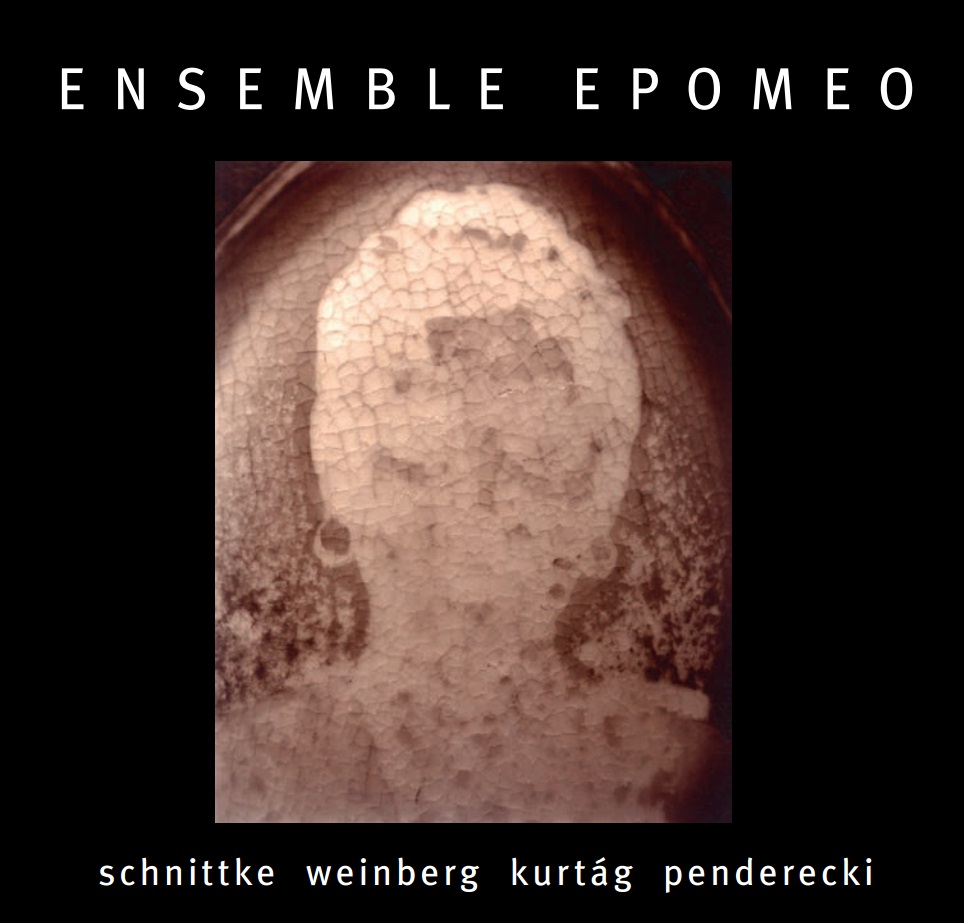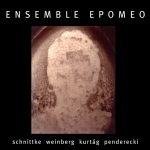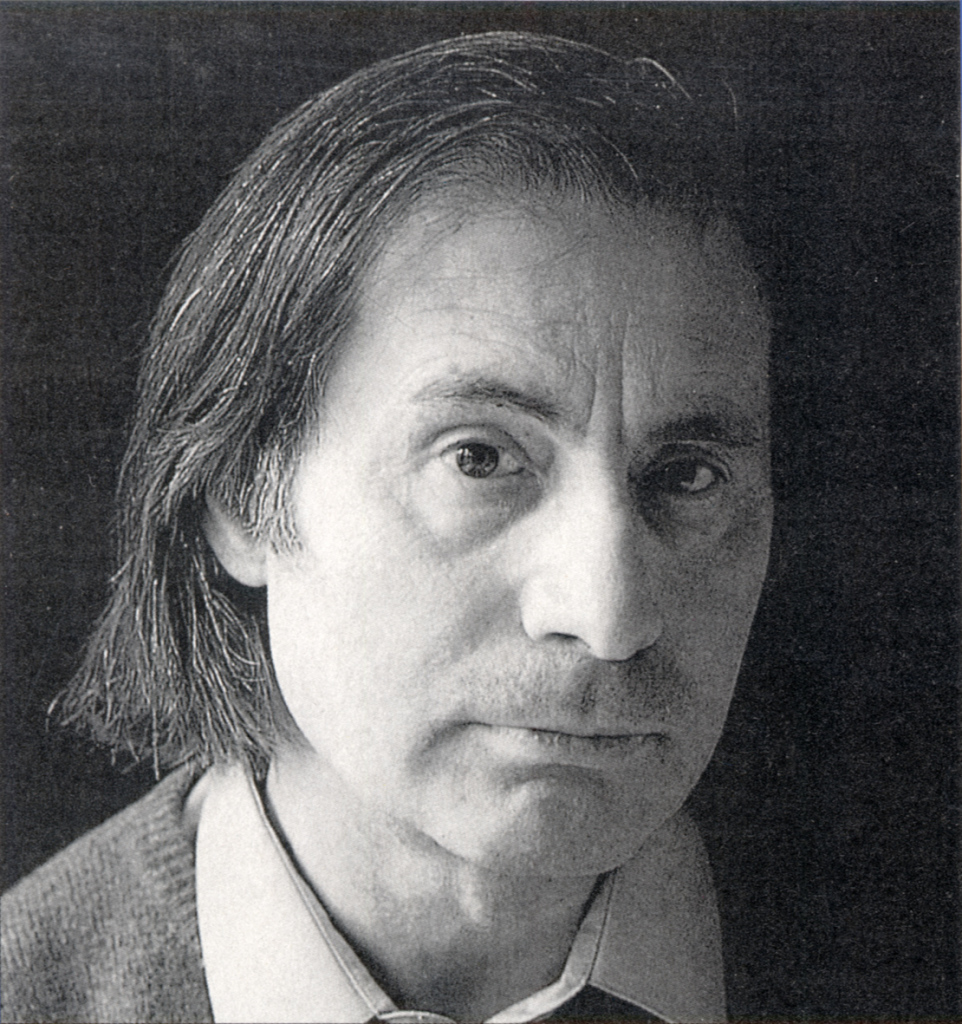Alfred Schnittke’s String Trio, composed in 1985, was commissioned in celebration of Alban Berg’s centenary. Schnittke later arranged the work as a Piano Trio, and his friend, Gidon Kremer, transcribed it for string orchestra. 1985 was to be the busiest year of Schnittke’s prolific creative life, the culmination of a period of development, distillation and maturation that had begun with the Piano Quintet of 1978. Schnittke’s biographer, Alexander Ivashkin says of this period in the composer’s life that “For many people, the Quintet seemed to be almost a betrayal of his principles…From the polystylistic surface of his earlier compositions, Schnittke goes deeper into the sphere of a musical language in which all the stylistic elements are combined in a single homogeneous whole.” From the late 1970’s through early 1985, Schnittke was possible the busiest composer alive, and was constantly interrupted by friends, colleagues and scholars. His health, never robust, began to show signs of deterioration. His recurring migraines, which had begun in his early thirties, became more severe and frequent.
Theodor Adorno wrote of the String Trio’s dedicatee, Alban Berg, that “his entire oeuvre was directed toward…reshaping music as a metaphor of vanishing… music to say adieu to life.” Schnittke, who had spent his entire adult life in the Soviet Union, was of Jewish and Volga German descent and had spent a formative part of his childhood in Vienna. He shared with Berg a sense of fascination with decay: “I set down a beautiful chord on paper—and suddenly it rusts,” he said of his own music. The String Trio shows the searing influence of late Shostakovich, but also Schnittke’s deep absorption with the Viennese masters, particularly Mahler and late Schubert, an affinity shared with Berg, who according to Adorno “assumes a position in extreme antithesis to that which the musical tradition calls healthy, to the will to live… as had Schubert before him, as had Schumann, and perhaps also Mahler.”
The Trio is in many ways a strikingly Classical work. The first movement (Moderato) is in Sonata form, and the work has a strong tonal centre of G minor. Schnittke is extremely economical in his material, developing a few key ideas with striking facility and originality. A great deal of the work’s rhythmic and thematic material is derived from the gentle melancholic dance theme which opens the trio.
The second thematic group (Meno mosso) is based on a lamenting theme first heard in the viola alternating wide dissonant intervals:
And a mournful melody heard first in the violin and cello:
This would later become one of the main themes of his First Cello Concerto
However, the most important and pervasive musical idea in the String Trio is a harmonic relationship Schnittke refers to as “common mediants,” or chords which share their third, such as C minor and B major. In the String Trio, Schnittke seems to put this relationship to every possible use, including using it as a chord progression, as in the massive fortissimo outbursts that occur twice in the first movement and once in the concluding Adagio:
He also uses it as a sonority, stacking the two chords on top of each other as he does in the dissonant choral that returns several times.
He also will re-harmonize a melody, for instance playing the same tune once in G minor then again in G-flat major.
Finally, the common mediant relationship replaces the normal tonic-dominant relationship as the main tonal constructive device—the exposition of the first movement ends not in D major (the dominant of G minor), but in the common median key of G-flat major. Likewise, the first movement ends in F-sharp major (the common mediant of G minor) before moving without pause into the Adagio which begins with four bars in the dominant before settling back in the tonic of G minor.
For all its structural clarity, the opening Moderato is one of the most dramatic (and physical) movements in the chamber music literature—for this performer, it always feels like a life-and-death struggle.
As in the Penderecki Trio (also on this CD), the second movement (Adagio) of the Schnittke is essentially an extension of, and in this case, a meditation on, the ideas of the first. If the first movement is life-and-death, this movement seems to be only the latter- the lilting opening dance theme of the Moderato now inverted and transformed into a bleak funeral march. In the final pages, Schnittke begins to pull together the themes of the work for a final summation. After a final titanic outburst, and a return of the dissonant chorale (both versions of his “common mediant theme), and a volcanic final statement of the theme from the Cello Concerto the viola sounds the elegiac trumpet call for the last time:
Finally, the opening dance melody returns for one final, complete statement in the home key of G minor.
After one final cadence on a pristine C major chord, the work collapses into the abyss- the cello and viola sound a death-knell, and the violin seems to depart the corporeal world.
Schnittke’s String Trio was premiered on 2 June, 1985 at the Moscow Conservatory. The musicians involved, Oleh Krysa, Fyodor Druzhinin and Valentin Feigin, described the work as possessing “unusual, grim, almost alarming notes—perhaps premonitions…” Only a few weeks later, on a very hot 21 July, Schnittke collapsed while socializing with friends. He was rushed to the hospital, where he was pronounced clinically dead three times before recovering consciousness.
More on the Schnittke at Vftp
Composer Kile Smith on the Schnittke String Trio



Thank you for your insightful comments on this brilliant work. This trio touches my soul, and your scholarship enhances my appreciation of it.